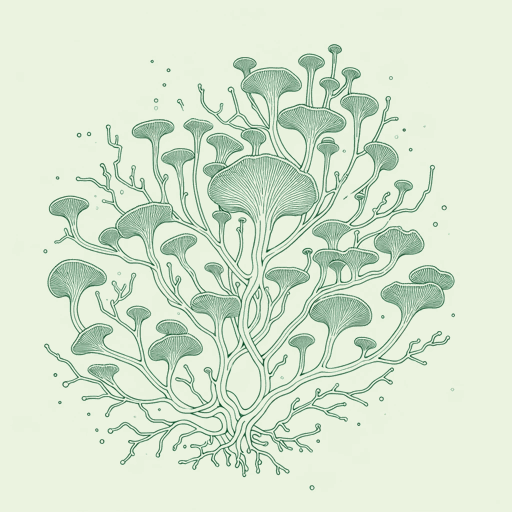44 pages • 1 hour read
Merlin SheldrakeEntangled Life: How Fungi Make Our Worlds, Change Our Minds & Shape Our Futures
Nonfiction | Book | Adult | Published in 2020A modern alternative to SparkNotes and CliffsNotes, SuperSummary offers high-quality Study Guides with detailed chapter summaries and analysis of major themes, characters, and more.
Chapters 7-EpilogueChapter Summaries & Analyses
Chapter 7 Summary: “Radical Mycology”
Sheldrake sits naked in a pile of rotting wood chips, a practice known as fermentation bathing and popular primarily in Japan. As he sweats from the chemical heat of decomposition, he muses about fungi’s power and influence throughout world history. He wonders if fungi can help heal some of the scars that humans have created in the world’s biome.
Coal, a naturally occurring rock that has been harnessed by humans to both transformative and destructive ends, exists because of the gap in time between the evolution of woody plants and the evolution of fungi that could decompose them. Today, there are a huge number of wood-eating fungi, but during the Carboniferous period dead trees fell, sunk into anoxic swamps, and stayed there. These trees were eventually buried and, after millions of years of pressure and temperature acting on them, they became dense, highly volatile coal deposits. Sheldrake uses the science of coal formation to explain the vast amounts of energy that pass through wood-eating fungi, called white rot fungi. When these organisms did not exist, the energy became trapped underground as coal, before eventually being released by humans during and after the Industrial Revolution of the 19th century.
Sheldrake and many other modern mycologists, both professional and amateur, believe that white rot fungi can be harnessed to transform the world.
Featured Collections
Appearance Versus Reality
View Collection
Climate Change Reads
View Collection
Creative Nonfiction
View Collection
Earth Day
View Collection
New York Times Best Sellers
View Collection
Popular Book Club Picks
View Collection
Science & Nature
View Collection
SuperSummary Staff Picks
View Collection
YA Nonfiction
View Collection

